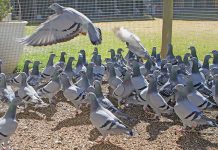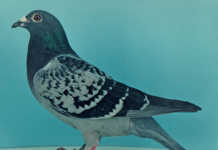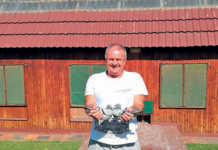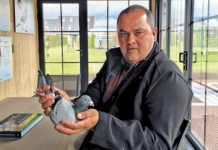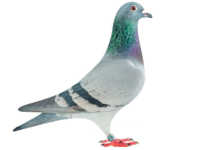In a working pigeon racing event, 1 200m/min to 1 250m/min are average speeds. Nearing 1 300m/min and above, the race is fast-paced, and 2 000m/min and more is extremely fast. In contrast, a race event clocking only 1 000m/min is referred to as “tough”. Below that it’s considered extremely difficult. A disastrous flight can mean different things to different fanciers, although high losses make any race disastrous. But what’s unusually tough in countries where pigeons are generally raced in mild weather conditions, may be the order of the day elsewhere.
Racing pigeons need to conquer not only bad weather, including cruel headwinds, heat and thundershowers, but also mountainous terrain, crossing seashores and staying on course in poor visibility. Often encounters with birds of prey place an extra burden on an already tired racing pigeon. However, the birds’ survival instinct is amazing and their achievements against all odds are sometimes miraculous.
Disastrous young bird racing
During the early 1970s, my pigeon club hosted a series of young bird races in December and January, in which most of the birds were younger than six months. Although the race distances were only between about 180km to 400km, the winning speeds were seldom above 1 000m/min. The youngsters were unstable and their orientation faculties underdeveloped. Youngsters that scored competitively in one race were often either off-paced or lost in another.
On Gauteng’s West Rand, a young bird series was hosted in early 2000. Before reaching the sixth and last race of the programme, the series was cancelled because the participants had lost all or most of their youngsters. Conditions were hot and humid and there was often a headwind, though that wasn’t entirely intolerable. In South Africa young bird races no longer take place, which has restricted the development of this important gene pool. Several South African fanciers, however, select for early maturity and often book successes with six-month-old youngsters against older pigeons in open competition.
Corrie Naudé, the head trainer of the Sun City Million Dollar Pigeon Race (SCMDPR), is considered a virtually unbeatable specialist in young bird racing. In 2008 he used youngsters of six months and younger with his old bird team and set up a new points record, competing against older birds in open competition.
Horses for courses
In Belgium, short-distance pigeon racing is generally undertaken at high speeds over flat terrain, as opposed to the mountainous areas of South Africa where many stray pigeons get lost during bad weather. Generally racing pigeons don’t fly over mountains, except if a tailwind literally blows them home or they approach at a higher altitude. When visibility is poor the birds also won’t fly through the channels of mountain passes, preferring to detour around the mountain. In extreme conditions, they’ll sleep in trees overnight or on rooftops and continue the journey when the weather improves.
In horse racing we talk about a fast race track. Then there are the obstacle events in athletics, specifically designed to test endurance rather than speed, but it’s still the fastest, not just the strongest runner who wins the race. In Cape conditions endurance should compliment speed, but often we have only one or the other and have to select for the missing trait. Specialised breeders worldwide patiently select their extreme long-distance birds for marathon races in which distances exceed 1 000km.
Although disastrous races usually happen on long and extremely long distances, conditions on the day can have even more of an influence. In 1999 a race event held from Leeu-Gamka to Gauteng, 947km, was completed in 10 hours and 35 minutes at a winning velocity of 1 427m/min. However, the pigeon in the 50th position only managed 1 294m/min. Even though the race was fast-paced, not all the birds had the extra stamina to stay on form.
Freak events
Sometimes we encounter freak training flights where for no perceptible reason pigeons take off in the wrong direction or just can’t find their way home. Three years ago our pigeons’ orientation ability was disrupted by sun spots and thousands of birds were lost, with the most losses reported in Gauteng.Last December the staff of a boat sailing near Port Elizabeth found a missing German pigeon that was entered in the forthcoming SCMDPR, more than 1 000km from the loft in the Pilanesberg. Safely returned, it behaves as if it never went for a boat ride.
Thomas Smit ([email protected] or call (011) 680 4778).


